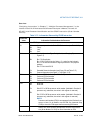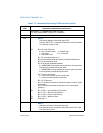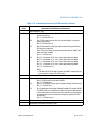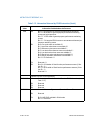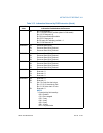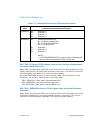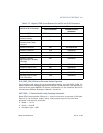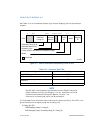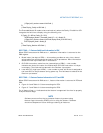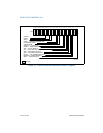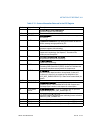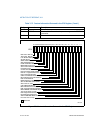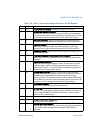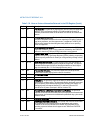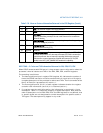
Vol. 2A 3-171
INSTRUCTION SET REFERENCE, A-M
CPUID—CPU Identification
(* Right justify and zero-extend 4-bit field. *)
FI;
(* Show Display_Family as HEX field. *)
The Extended Model ID needs to be examined only when the Family ID is 06H or 0FH.
Integrate the field into a display using the following rule:
IF (Family_ID = 06H or Family_ID = 0FH)
THEN Displayed_Model = (Extended_Model_ID << 4) + Model_ID;
(* Right justify and zero-extend 4-bit field; display Model_ID as HEX field.*)
ELSE Displayed_Model = Model_ID;
FI;
(* Show Display_Model as HEX field. *)
INPUT EAX = 1: Returns Additional Information in EBX
When CPUID executes with EAX set to 1, additional information is returned to the
EBX register:
• Brand index (low byte of EBX) — this number provides an entry into a brand
string table that contains brand strings for IA-32 processors. More information
about this field is provided later in this section.
• CLFLUSH instruction cache line size (second byte of EBX) — this number
indicates the size of the cache line flushed with CLFLUSH instruction in 8-byte
increments. This field was introduced in the Pentium 4 processor.
• Local APIC ID (high byte of EBX) — this number is the 8-bit ID that is assigned to
the local APIC on the processor during power up. This field was introduced in the
Pentium 4 processor.
INPUT EAX = 1: Returns Feature Information in ECX and EDX
When CPUID executes with EAX set to 1, feature information is returned in ECX and
EDX.
• Figure 3-6 and Table 3-15 show encodings for ECX.
• Figure 3-7 and Table 3-16 show encodings for EDX.
For all feature flags, a 1 indicates that the feature is supported. Use Intel to properly
interpret feature flags.
NOTE
Software must confirm that a processor feature is present using
feature flags returned by CPUID prior to using the feature. Software
should not depend on future offerings retaining all features.



